Borders attempt to separate one thing from another—one territory from another, one group of people from another—but it's also right at the border that these efforts to separate, classify, and categorize fall apart. Things are always messy at the border: identities, languages, cultures, territories overlap. Especially in Africa where national borders are the fabricated creations of European empires that divvied up the continent according to their own ends.
My novel, Ghost Season, is set in a border town between Sudan and South Sudan. The novel was inspired by time I spent working with an NGO on the border between the two regions, before the secession of South Sudan in 2011. The novel's five protagonists must navigate all kinds of borderlines, some of them inherited from the colonial past, others emerging out of the present of civil war. But these borders are unstable and ever-shifting, and the characters' own stories and identities exceed clear demarcations.
The most profound borders aren't just physical or geographic, they're also social, emotional, and psychological. Writing Ghost Season was in itself a border-crossing. To face the empty page day after day requires a crossing into the unknown, a faith in the mysterious territory that lies beyond. Writing—and any creative endeavor—is an attempt to move into a new frontier, to imagine beyond the limits of your own imagination.
Below is a list of some of my favorite books on borders, border towns and border crossings of all kinds: physical as well as social crossings, cosmic escapades, and gender-defying odysseys.
*
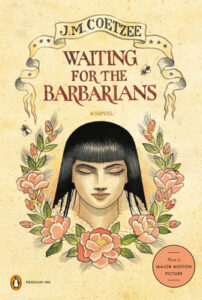
J.M. Coetzee, Waiting for the Barbarians (1980)
An unnamed colonial magistrate sits waiting in a remote outpost located on the border of The Empire. Beyond this frontier, the "barbarians," the territory's indigenous people, live. The magistrate, who narrates the story, recounts the events. When the Empire declares a state of emergency, officials from the "Third Bureau" arrive to conduct torture interrogations on the "barbarians" whom they accuse of fomenting rebellion. As things unravel, the magistrate finds himself questioning the very Empire he's charged with defending. Coetzee's novel is one of the most brilliant and haunting depictions of the colonial frontier in literary fiction.

Fatima Mernissi, Dreams of Trespass: Tales of a Harem Girlhood (1994)
Mernissi, who passed away in 2015, is most widely known as a feminist scholar of Islam. But she also wrote non-fiction for a wider audience. Amongst her works is Dreams of Trespass. This semi-fictional memoir of her childhood in a harem in 1940s Morocco reads like a novel: the author's descriptive powers are immense, and her evocation of the sights, sounds, and smells of her childhood world are impressive.
Growing up in an upper middle-class home in Fez, we follow the young Fatima as she begins to grasp the division that structures her world: the realm to which her mother, aunts and other women of the family are confined, the harem, and the world beyond, out in the street, in which men roam freely. But what is so special about this memoir is the way in which it upends all the stereotypes and preconceptions about Muslim women "confined" to a harem: the women in Mernissi's family transgress the boundaries of the harem—and the limits of feminine confinement—in all kinds of ways.

Arundhati Roy, The God of Small Things (1997)
I'm one of those readers for whom reading this novel, when I was in my late teens, was akin to a religious awakening or spiritual conversion. Here the borders that are crossed are not so much physical but social: the taboo boundaries of caste and incest. Set in Kerala, South India, the novel tells the story of fraternal twins Rahel and Esthappen, sister and brother who, at seven years old, experience traumatic events involving their mother, Ammu, and her Dalit lover, Velutha. The violence that ensues destroys the family, sending the twins on different paths, until they're finally reunited twenty-four years later. The most powerful works of fiction are often the messiest and most raw—which is why Roy's novel often polarizes readers. But every time I read The God of Small Things, I'm entirely in awe of the bold soul that dreamt it up.
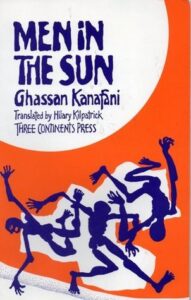
Ghassan Kanafani, Men in the Sun (1963)
This novella by Palestinian writer Ghassan Kanafani tells the tale of three Palestinian refugees displaced from their homes in Palestine to camps in Iraq. Hoping to escape the grim conditions of the camps, they attempt to escape to Kuwait to find work in the oil boom. The story unfolds as the men hide in a truck driven by a smuggler who must cross the desert and pass safely through several check points. The desert is a cauldron, the journey is endless, and the men are at their limits. It is one of the most powerfully visceral depictions of the physical and psychological toll endured by those who must risk horrific journeys to cross into a better life.
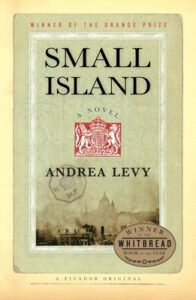
Andrea Levy, Small Island (2004)
Small Island follows a Jamaican couple, Hortense and Gilbert, and an English couple, Queenie and Bernard, before, after and during the Second World War. Moving between Kingston, Jamaica and London, UK, the characters narrate their lives as they cross geographic, cultural, racial and class boundaries. When Hortense and Gilbert try to adapt to their new life in London, they find that they're forever treated as outsiders, despite Gilbert's service to Britain during the war and Hortense's tireless efforts to integrate as a good subject of Empire and a "good immigrant."
In London, Queenie and Bernard's lives are turned upside down by the war, which puts them in contact with Hortense and Gilbert and forces them to rethink their relationship to each other, as well as what it means to be British. The novel shows how the boundary between the center of Empire (London) and periphery of Empire (Kingston) is all but an illusion. It also happens to be a hugely funny book, and one of the most expansive works of contemporary fiction about the Black British experience.
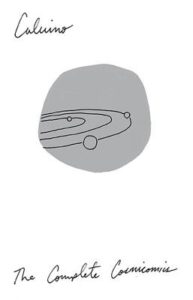
Italo Calvino, The Complete Cosmicomics (2009)
This fictional autobiography of the universe is told by narrator Qfwfq, who, depending on the age of the universe, takes on the persona of an atom, a mollusk, a dinosaur, an amphibian. Sometimes, other members of the cosmic family, including Granny Bb'b, Sister G'd(w)n, and Fish Grand-Uncle N'ba N'ga, make an appearance. In Calvino's retelling, the limits of time and space cease to exist—we begin at the dawn of the universe, travel millions of light years, jump from galaxy to galaxy, and from one evolutionary epoch to another. The Cosmicomics is a masterpiece of speculative fiction that reveals all the boundary-busting beauty of the genre, as well as Calvino's infinitely rich imagination.

Gloria Anzaldúa, Borderlands/La Frontera (1987)
A hybrid work of poetry, non-fiction, and criticism, Borderlands/La Frontera also crosses linguistic boundaries, foregrounding Spanish alongside English. This is the seminal text on the Mexico-US border not only because it was one of the first to articulate the complex identity of this border region created as a consequence of colonial conquest, the destruction of indigenous populations, and cultural mixing. What makes the book so lasting is its formal experimentation: the boldness of a genre- and language-crossing voice that not only describes the border, but embodies it.

Virginia Woolf, Orlando: A Biography (1928)
The protagonist of Woolf's novel, Orlando, is born a man in the reign of Queen Elizabeth I, mysteriously wakes up as a woman in adulthood, and lives on for hundreds of years. Woolf is once again at the vanguard here: challenging the limits of gender, the boundaries between "male" and "female," and writing queer literature far ahead of her time. This gender-crossing odyssey is a delight, and an absolute must-read classic.
__________________________________
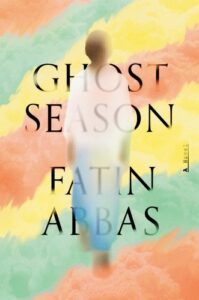
Ghost Season by Fatin Abbas is available from W.W. Norton & Company.
No comments:
Post a Comment